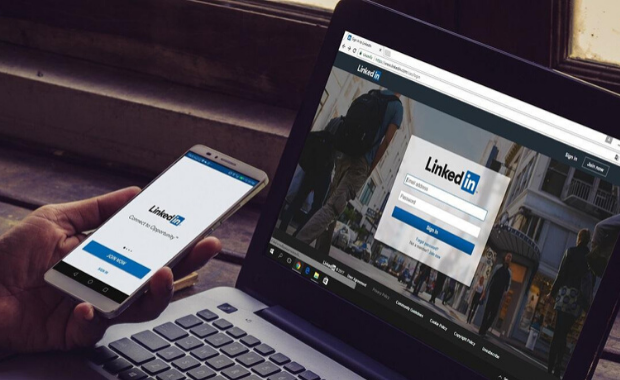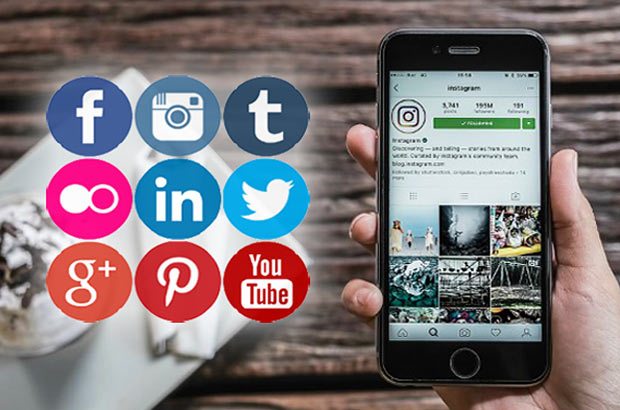Success Advice
The Basic Guide to Building Your Personal Brand on LinkedIn

If you’d like to learn how to build your personal brand so you can achieve the success you’ve always dreamed of, sign up for the free 90-Day Master Class hosted by the founder of Addicted2Success.com, Joel Brown.
If you want to know how to network in the business world, you’re going to need to take a look at the following wise words. Here you’ll find everything you need to know to promote yourself on LinkedIn, build a robust network of contacts, and take your career in an exciting new direction. With your peers, colleagues, and competitors already using LinkedIn to their advantage, can you afford to be left behind?
1. Figure out who you’re targeting
You might think that to create a winning LinkedIn profile, you need to get busy seeking endorsements and adding your CV, but there’s a crucial step before all of that: targeting.
Targeting is what allows you to ensure you’re positioning your brand the right way, and it’s the foundation for your entire LinkedIn strategy. Are you looking for a promotion in the same field, a change of direction, or to position yourself as a thought leader? If you don’t know the answer, then you need to give it some serious thought. It will set the tone for the rest of your LinkedIn efforts.
2. Use SEO to boost your headline
Before telling you how to use SEO to boost your LinkedIn headline, you should first know what SEO means. SEO comes from search engine optimization. It evaluates a website’s traffic quantity and quality through organic search engine results. Several elements influence good SEO results.
First, traffic quality refers to your ability to attract visitors who are genuinely interested in your products. The quantity of traffic talks about the number of interested visitors who are generating traffic from search engine results pages. Finally, the organic results are also part of SEO. It represents the type of traffic that you get on your webpage without having to pay for it.
Coming back to using SEO to boost your headline, you should think of it as your introduction or your business card, which means it needs to be on point. The way you do it is by being memorable, engaging, and informative, and also by weaving in some SEO magic at the same time.
Now that you know who you’re targeting, you’ll be able to find a relevant keyword people will be searching for when they’re looking for someone just like you. Add it into your headline in a natural and organic way that doesn’t sacrifice readability, and you’ll be off to a great start.
3. Add a professionally taken photo, not a selfie
Profile photos are an area where a lot of people fall on LinkedIn. You don’t want filters or selfies anywhere near your profile — save that for the more casual social networks. Have a professional corporate headshot taken, or add a picture of you giving a presentation or receiving an award. It’ll give the right impression and show how you look when you’re immersed in the world of work, not when you’re pulling faces with your friends.
“One of the great things about LinkedIn is it isn’t the same kind of networking that happens at conventions, where you’re wearing a name tag, trying to meet strangers, and awkwardly attempting to make small talk. LinkedIn is networking without the pressure.” – Melanie Pinola
4. Write a summary section that does you justice
Your summary section is where you start to sell yourself, so make sure you make it count. You don’t want it to go on and on, so think about capping it at 200 words. That way, it can be read in 1 minute, but it will also give you enough space to sell yourself. You’ll want to give an insight into the way you work, what you can add, and what you hope to achieve. You don’t have to list every qualification and training course you’ve ever been on — there are other sections where you can do that.
5. Use keywords to hone in on your chosen niche
Keywords aren’t just crucial for a winning headline; they should be used throughout your profile to create the most significant SEO footprint you can. Use highly targeted phrases with medium search volume and low competition. It’s what will enable you to stand out from the game when a specialist recruiter or business is looking for you.
6. Fill out all 50 skills so you can show what you can do
The skills section is there to be used, so get as specific as possible so that interested parties get a real feel for what you can offer. You need a combination of industry-specific skills and general skills like teamwork, communication, and IT.
List the industry-specific ones first so that the reader won’t have to skim through the same old stuff you’ll find on every profile. Be specific, concise, and then move seamlessly onto the next point on our list.
7. Seek out endorsements from everyone in your network
If you want to be taken seriously on LinkedIn, endorsements are the answer. They’re the way you can add credibility to what you’re saying about yourself, so get out there and track them down. A great way to get plenty is to be proactive in endorsing others. Be genuine and sincere so that it doesn’t come across like you’re spamming to get feedback on your profile.
“You can make more friends in two months by becoming interested in other people than you can in two years by trying to get other people interested in you.” – Dale Carnegie
8. Make maximum use of the other profile sections
LinkedIn offers you space for everything, from awards and promotions to charity and volunteer work. Make sure you fill everything out that’s applicable so you can give a well-rounded profile of yourself. You’re someone who has a vast number of interests, achievements, and aspirations, so get it all out there for the world to see.
9. Keep everything up to date
There’s nothing more self-defeating than a LinkedIn profile that’s two years out of date. If you want it to be a useful tool going forward, you need to be updating it regularly. Schedule in a monthly audit at the end of the month so you can make sure everything is just how it should be. Most of the time, there won’t be anything to do, and that’s great because it means your profile is in the best shape possible.
10. Share relevant articles to position yourself as a thought leader
When you want to build a personal brand, you need to show that you’re involved in your industry, which is where sharing articles and other content comes in. If you take the time to share a couple of relevant articles a week, you can soon find that dozens of recruiters and colleagues are following you.
Sharing these types of articles is going to help propel your brand to the next level, and you’ll find plenty of new material you wouldn’t have found otherwise.
11. Connect with relevant recruiters to increase your brand’s visibility
Last but not least, be proactive about approaching people. Add specialist recruiters in your niche, or investors if you’re looking to launch a startup. It’s all about getting out there and introducing yourself, so consider setting a target for the number of new connections you want to hit by the end of the month. It’ll give you the focus and direction you need to make it happen. You can also automate LinkedIn for this task.
Now that you’ve heard all about how to leverage LinkedIn to build your brand, you’ll be well equipped to go out there and start making things happen. If you take everything on board, you’ll be able to avoid all of these common LinkedIn mistakes. But if you don’t, you could soon find yourself a long way behind your colleagues when it comes to securing the promotion or change of direction you’ve all been striving for.
What are your best strategies for using LinkedIn? Share them below so we can implement them!
Did You Know
How Skilled Migrants Are Building Successful Careers After Moving Countries
Behind every successful skilled migrant career is a mix of resilience, strategy, and navigating systems built for locals.

Moving to a new country for work is exciting, but it can also be unnerving. Skilled migrants leave behind familiar systems, networks, and support to pursue better job opportunities and a better future for their families. (more…)
Life
10 Research-Backed Steps to Create Real Change This New Year
This New Year could finally be the one where you break old patterns and create real, lasting change.

Every New Year, we make plans and set goals, but often repeat old patterns. (more…)
Change Your Mindset
The Silent Skill That Makes People Respect You Instantly
What truly earns respect and why most people go about it the wrong way

Everybody craves respect but not everyone earns it. Some people believe that a title, years of experience, or a position of authority automatically entitles them to respect. (more…)
Entrepreneurs
The Essential Skills Every Entrepreneur Needs In 2026
Success in the digital age isn’t about luck. It’s about mastering the skills that separate dreamers from doers.

When I was 22 years old, I started my first side hustle as a ghostwriter. (more…)
-

 Entrepreneurs4 weeks ago
Entrepreneurs4 weeks agoThe Essential Skills Every Entrepreneur Needs In 2026
-

 Change Your Mindset3 weeks ago
Change Your Mindset3 weeks agoHow to Turn Your Mind Into Your Greatest Asset (Instead of Your Enemy)
-

 Change Your Mindset3 weeks ago
Change Your Mindset3 weeks agoThe Silent Skill That Makes People Respect You Instantly
-

 Life2 weeks ago
Life2 weeks ago10 Research-Backed Steps to Create Real Change This New Year
-

 Tech2 weeks ago
Tech2 weeks agoWhat’s in a Name? How to Get Your Domain Right
-

 Did You Know2 weeks ago
Did You Know2 weeks agoHow Skilled Migrants Are Building Successful Careers After Moving Countries






















